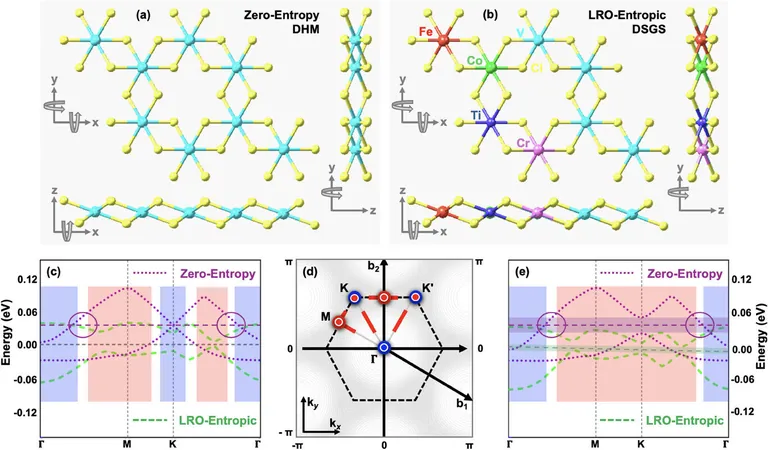
Unlocking Quantum Potential: How Entropy Engineering is Revolutionizing 2D Magnets
2025-06-30
Author: Charlotte
New Discoveries in Quantum Physics
A groundbreaking research team from the University of Wollongong's Institute for Superconducting and Electronic Materials has cracked a 40-year-old mystery in quantum physics, paving the way for the creation of next-generation electronic devices that operate flawlessly with zero energy loss. This exciting advancement could reshape the future of technology as we know it.
Introducing the Quantum Anomalous Hall Effect
The team's study, published in the prestigious journal *Advanced Materials*, is led by Distinguished Professor Xiaolin Wang and Dr. M Nadeem, alongside Ph.D. candidate Syeda Amina Shabbir and Dr. Frank Fei Yun. Their innovative research introduces a novel design concept aimed at realizing the highly sought-after quantum anomalous Hall (QAH) effect.
The Future of Energy-Efficient Electronics
Imagine a world where our devices consume less energy and function without waste—this could soon be a reality. The realm of quantum materials promises to dramatically reduce global energy consumption and enhance daily life. Through a process known as entropy engineering, the researchers manipulated the quantum characteristics of a 1-atom-thick magnetic material by blending four different types of metal atoms. This random atomic configuration redefined the material's electronic structure, unlocking a topological bandgap that allows electricity to flow effortlessly along its edges, resulting in a "superhighway" for current.
A Leap Forward for Quantum Technologies
This breakthrough is not just academic; it serves as a foundational element for the development of future quantum computers and ultra-efficient electronics. Professor Wang stated, "Our method opens up a new avenue for designing 2D quantum materials with incredibly robust topological properties." This could lead to devices that not only are energy efficient but also scalable and resilient.
Broad Implications for Technology
The implications of this research are extensive. From smartphones and computers that remain cool under pressure to revolutionary advances in medical imaging and energy systems that can store power for extended periods, the potential applications are limitless. This research also enhances a category of materials that Professor Wang has been pioneering—spin-gapless semiconductors.
Engineering with Entropy for Real-World Applications
Dr. Nadeem, who spearheaded the theoretical modeling, affirmed the design's impact, stating, "Our entropy-driven approach has not only reshaped the electronic bands but has also established a stable gap, ensuring edge-state conduction crucial for practical quantum applications." Professor Wang concluded with a powerful assertion: "This discovery represents a monumental theoretical leap, setting the stage for next-generation quantum devices that are energy-efficient and robust. We are embarking on a journey into a new class of quantum materials, unlocking fresh horizons for innovative quantum physics and technology."









 Brasil (PT)
Brasil (PT)
 Canada (EN)
Canada (EN)
 Chile (ES)
Chile (ES)
 Česko (CS)
Česko (CS)
 대한민국 (KO)
대한민국 (KO)
 España (ES)
España (ES)
 France (FR)
France (FR)
 Hong Kong (EN)
Hong Kong (EN)
 Italia (IT)
Italia (IT)
 日本 (JA)
日本 (JA)
 Magyarország (HU)
Magyarország (HU)
 Norge (NO)
Norge (NO)
 Polska (PL)
Polska (PL)
 Schweiz (DE)
Schweiz (DE)
 Singapore (EN)
Singapore (EN)
 Sverige (SV)
Sverige (SV)
 Suomi (FI)
Suomi (FI)
 Türkiye (TR)
Türkiye (TR)
 الإمارات العربية المتحدة (AR)
الإمارات العربية المتحدة (AR)